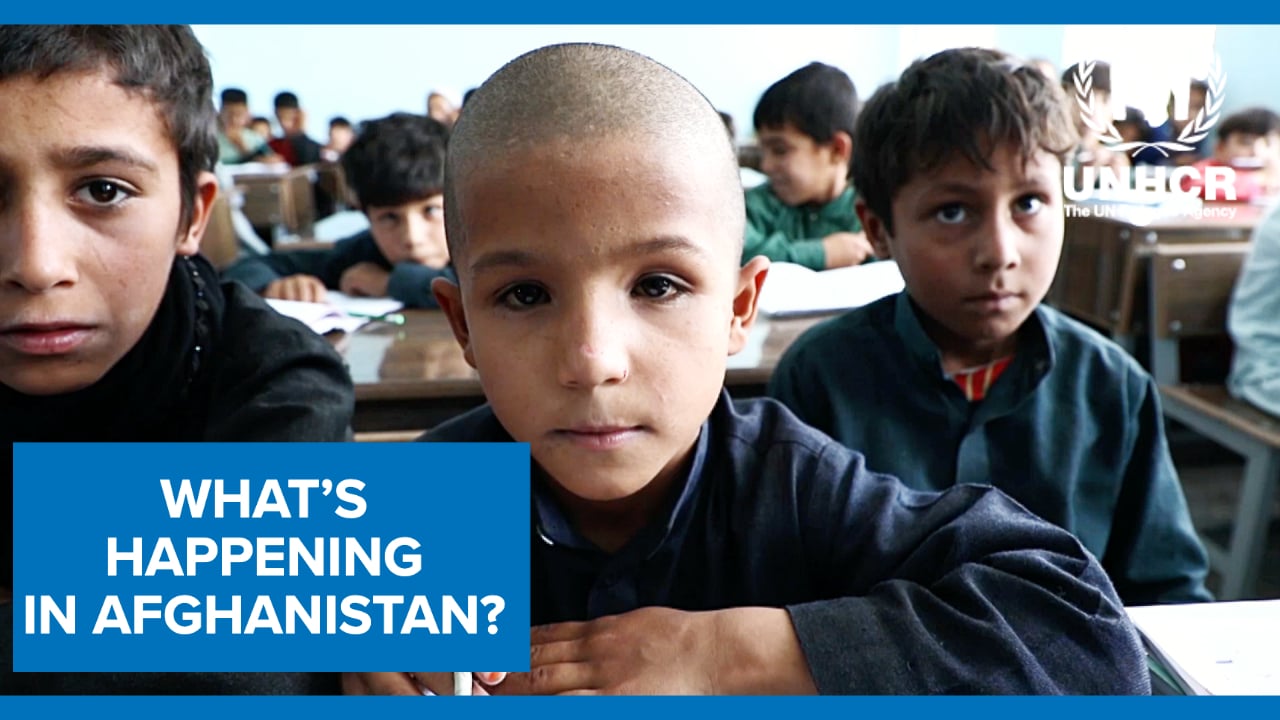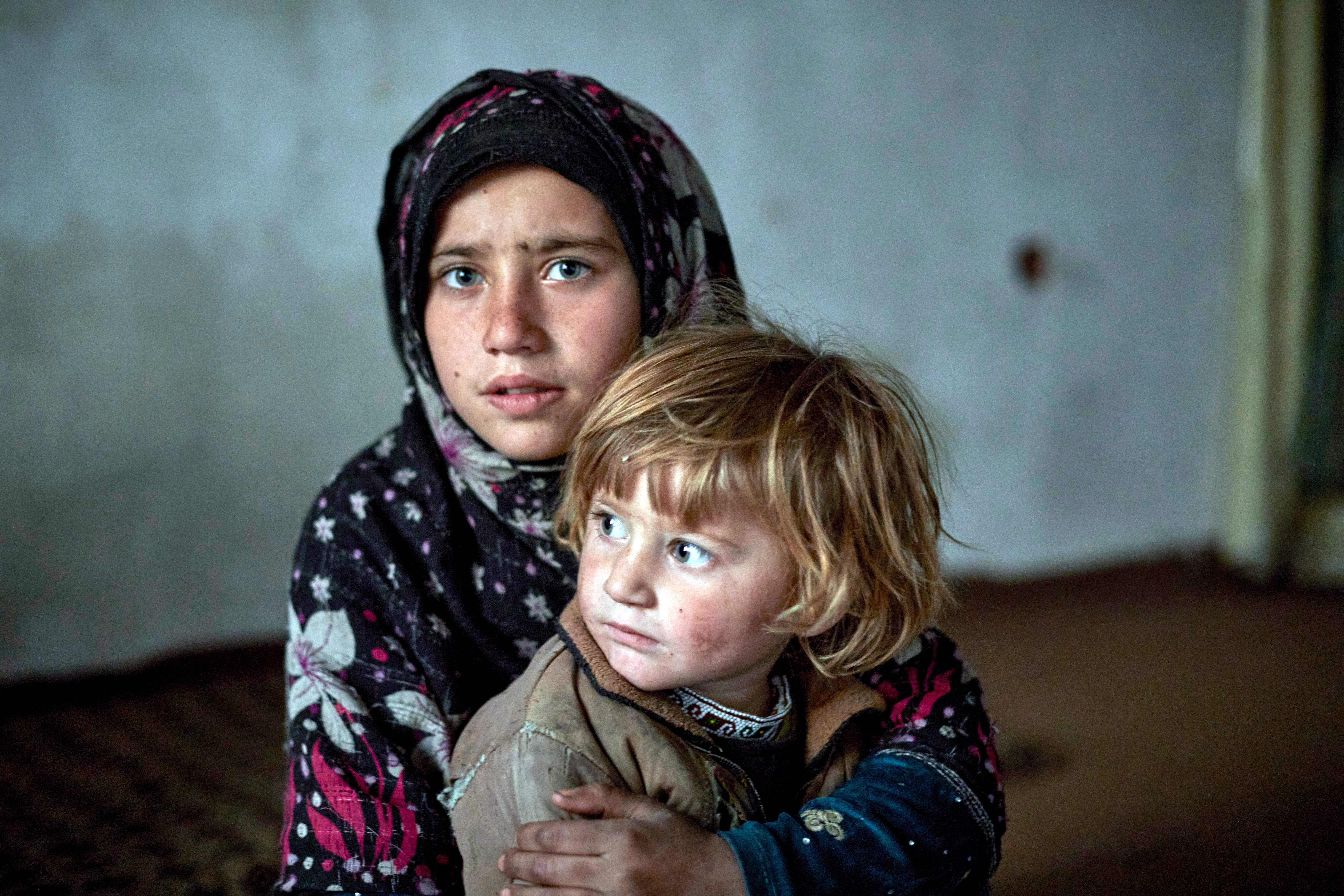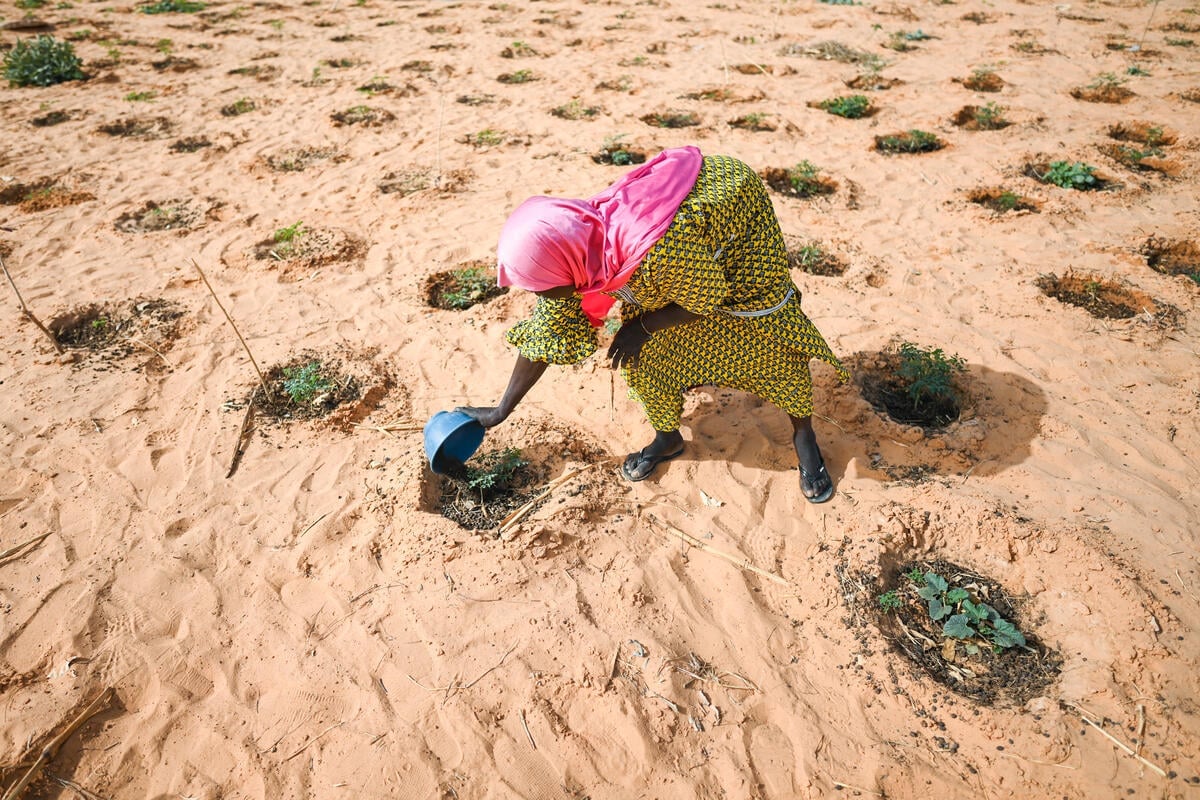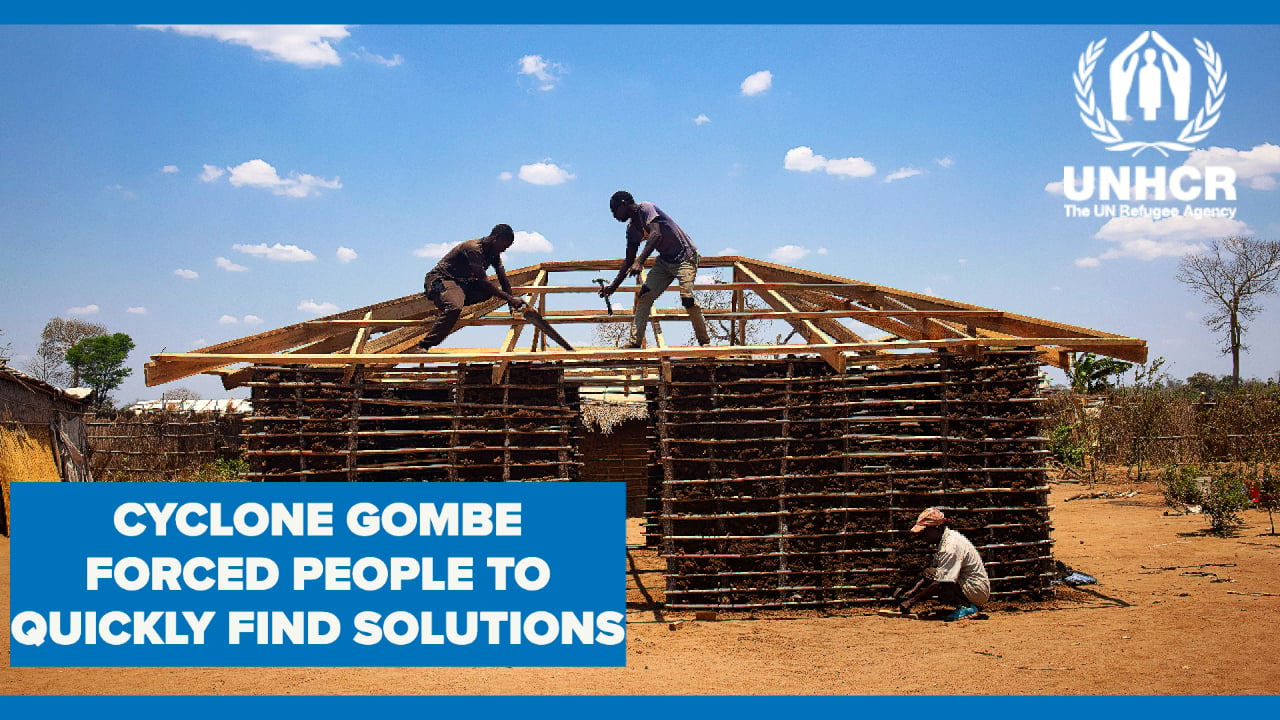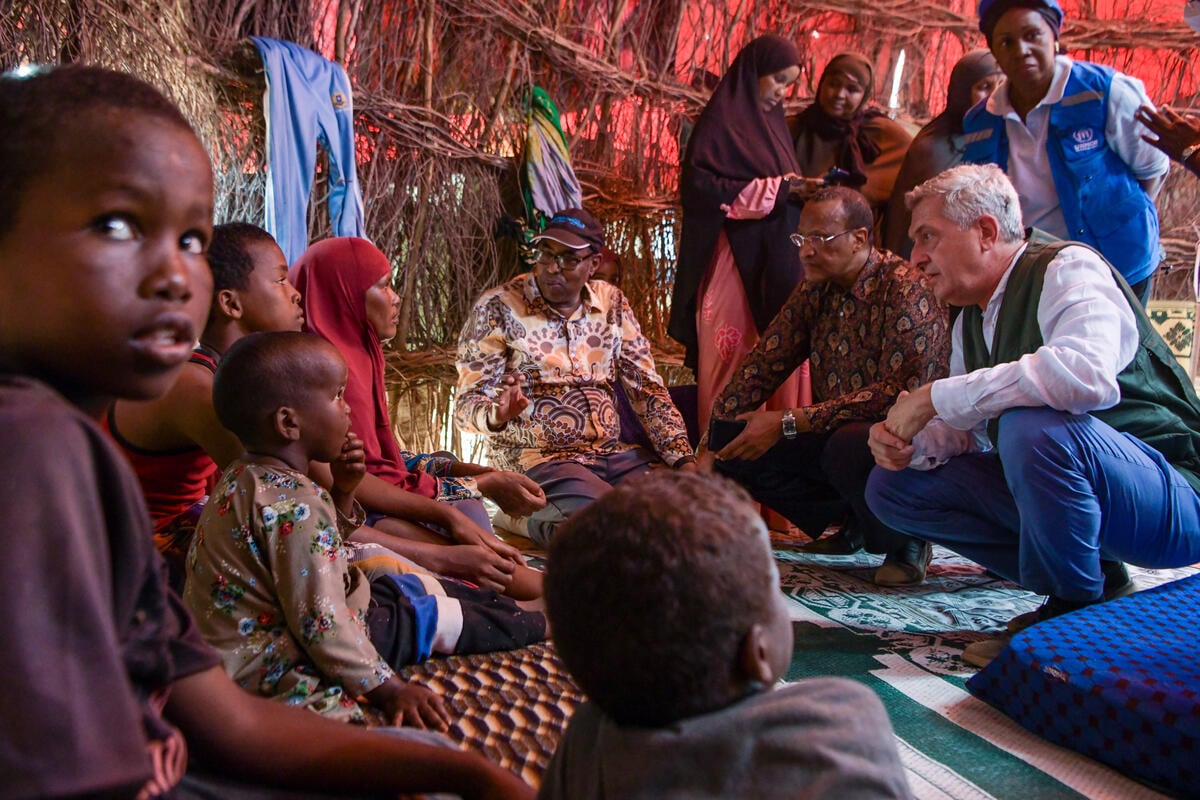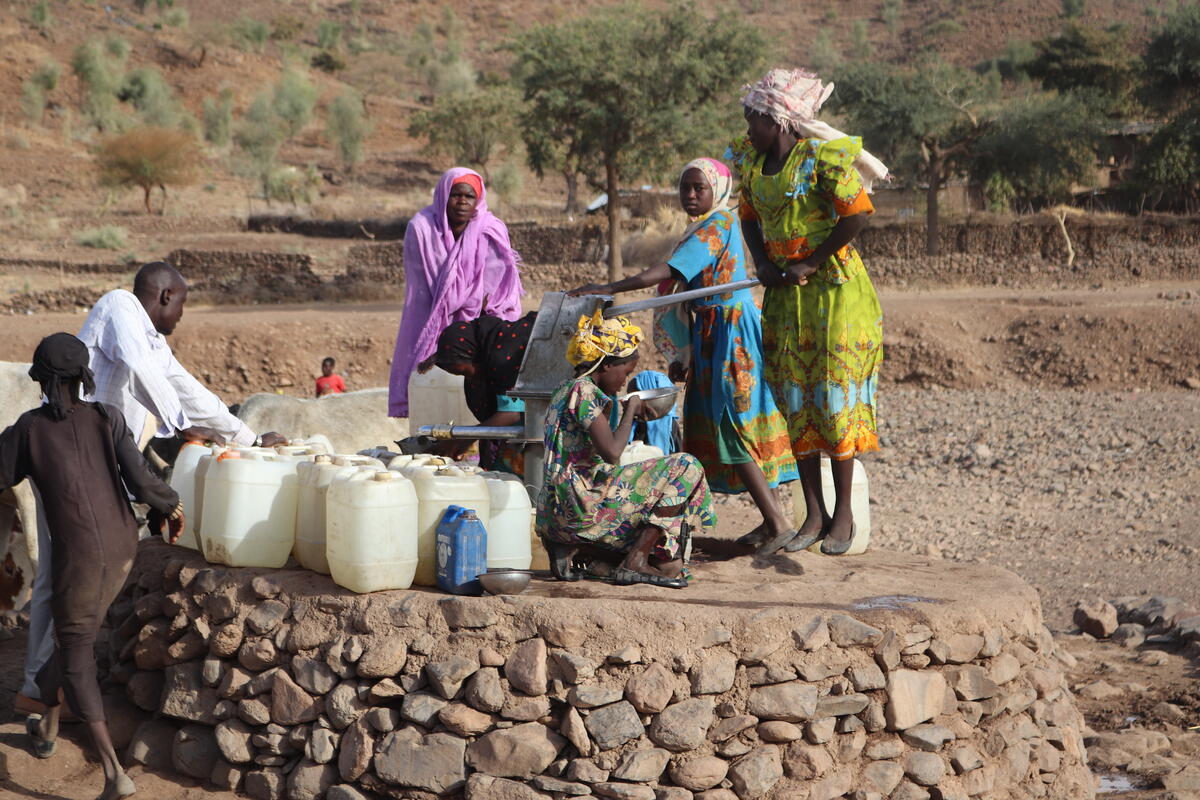Colombian conflict could wipe out indigenous groups, warns UNHCR
Colombian conflict could wipe out indigenous groups, warns UNHCR

BOGOTA, Colombia, April 22 (UNHCR) - Indigenous groups in Colombia are in danger of disappearing amid the country's continuing conflict, warned the UN refugee agency today as it joined a mission to assess the situation of thousands of indigenous people displaced by fighting in the south-west.
This week, clashes between the Colombian Army and guerrillas from the Revolutionary Armed Forces of Colombia (FARC) displaced an estimated 3,500 indigenous Nasa people from the area around the village of Toribío in the south-western province of Cauca. The number could swell to 5,000 if the fighting continues. UNHCR and other UN agencies visited the area on Friday to evaluate the humanitarian needs of the population and to support relief efforts by the civilian authorities.
The Nasa, however, are just one of many indigenous groups that have been affected by more than two decades of conflict in Colombia. Attacks on indigenous communities and leaders are reportedly on the rise this year.
"There are even fears that, if the present trend continues, some of the smaller and more vulnerable groups and their cultures may actually disappear as they are driven from their ancestral lands and disperse - possibly never to return," UNHCR spokesman Ron Redmond told journalists in Geneva on Friday.
"Some small indigenous communities of the Amazon region are in real danger of becoming extinct," said Rodolfo Stavenhagen, the UN Special Rapporteur on the Rights of Indigenous Peoples. "The conditions of internally displaced indigenous people are especially worrying, particularly those of women, girls and boys."
Colombia is home to over 80 indigenous groups numbering just under 1 million people. Forced displacement has affected them in a disproportionate way: although indigenous people make up just 2-3 percent of the country's population, as many as 8 percent of all internally displaced people are indigenous. Virtually all indigenous groups in Colombia have been victims of forced displacement or are at serious risk of being displaced from their ancestral lands.
Indigenous people often become displaced within their region of origin, to try to preserve their ties to their ancestral territories, or flee towards remote areas where they cannot be easily detected, and this is a contributing factor in making their tragedy invisible.
Since indigenous identity and culture are closely linked to the land, indigenous communities suffer serious irreversible damage when forced to displace: loss of traditional and cultural patterns, including language, and a dramatic deterioration of their lifestyle. These changes affect particularly the most vulnerable groups, such as children, youth and the elderly.
In the north-western province of Chocó, some 4,000 indigenous Embera people are at imminent risk of being displaced by fighting between guerrillas and paramilitary groups in the Bojayá area. In March 2004, over 1,200 persons from five indigenous communities in this area were forced to flee their homes. Since the beginning of this year, the irregular armed groups have increased their activities, imposing blockades to stop food, medicine, fuel and other vital supplies from reaching some communities.
In the northern region of the Sierra Nevada de Santa Marta, some 40,000 people belonging to four indigenous groups (Wiwas, Koguis, Kankuamos and Arhuacos) are struggling to survive and defend their culture. Caught between different armed groups fighting for control of this strategic area, the peoples of the Sierra Nevada face a growing trend of forced displacement and restrictions in the access to vital food and medicine supplies.
"We will oppose with our lives these attacks against our land, the Sierra Nevada, our mother and heart of the world. Without violence of any kind, but with the conviction of those who know that justice and truth are on their side, we will continue to say it out loud and with force," noted the Declaration of the spiritual leaders of the indigenous peoples of the Sierra Nevada de Santa Marta.
The Awá, who live along the border with Ecuador, have borne the brunt of the conflict in the southern province of Nariño, having been subjected to pressures and threats, economic blockades, forced displacement and the murder of their leaders. Other peoples such as the Eperara-Siapidaara, the Pasto, the Quillacinga, the Inga and the Kofan have also been affected by the armed conflict in this part of Colombia.
Like many of the indigenous peoples of Colombia, the Eperara-Siapidaara, who live along Colombia's Pacific coast, have historically suffered from the colonization of their lands, which resulted in the sacking of natural resources and the planting of illegal crops. They have also been victims of forced recruitment by irregular armed groups, and are at risk of being forcibly displaced.
According to UNHCR's estimates, 46 percent of all the victims of mass displacements in the southern province of Nariño last year, were indigenous. This is particularly worrying since indigenous people make up less than 8 percent of Nariño's population. Nearly half of those indigenous persons who were victims of mass forced displacements were neither registered not assisted by the authorities. The figure is probably higher for individual displacements.
Indigenous communities in Antioquia, Chocó and Cauca, have denounced abuses by the Colombian Armed Forces. Others, like those in Arauca, Chocó, Guaviare and the Amazonian province of Vaupés, have denounced the presence of antipersonnel mines in their territories.
"More than 20,000 people in the Mitú and Carurú areas of Vaupés, a province where 85 percent of the population is indigenous, are caught in the cross-fire between the different parties to the conflict. We warn about the serious risk of extinction of these indigenous communities," said the Association of Traditional Authorities of Vaupés.
"We call on the Colombian authorities to take urgent measures to protect indigenous communities and leaders and to investigate all the murders and other crimes committed against them," said UNHCR's Redmond. "We also call upon all the parties to the conflict to respect the principles of International Humanitarian Law, respect the rights of the civilian population and refrain from involving civilians in the conflict."
In Colombia, the UN refugee agency works to protect the rights of indigenous people, to promote the participation of indigenous women in their communities' decision-making processes, and to strengthen indigenous organizations in order to improve their response capacity.
UNHCR's projects in indigenous communities include helping people to obtain official identification documents, training teachers to address the needs of displaced children, recreational activities for indigenous youth, human rights training, and projects to help indigenous communities document the principles of their culture.
By William Spindler in Bogota, Colombia



